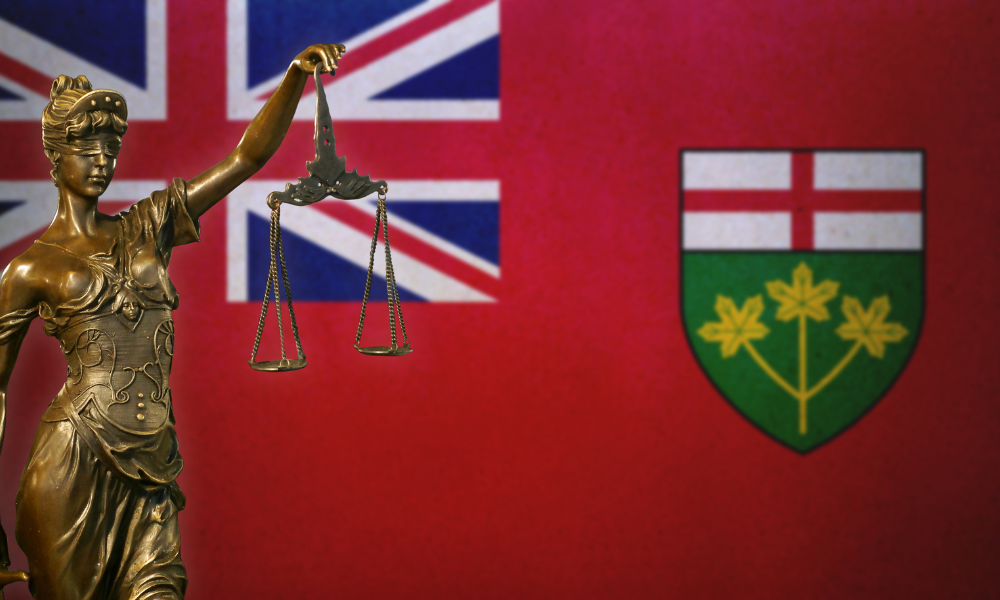Money doesn’t grow on trees; however, it can sometimes grow out of car loans, credit cards, and even mortgages. These are all part of the different types of asset securitization, which help move money, allowing those that need them to have more access in this economy.
Here, we’ll be discussing how asset securitization works, along with its many types. This guide can be used by companies that want to learn more about asset securitization. Lawyers can also use this piece as an educational tool for their clients.
What is asset securitization in Canada?
Asset securitization is the process of pooling illiquid assets (also called “underlying assets”) of an institution into securities that can be traded in the capital markets. This is done by creating a special-purpose vehicle (SPV), which is a separate entity from the financial institution for legal and regulatory purposes.
As these assets become tradable securities, they are then sold by the SPV to investors to generate income for the institution. As investors earn income out of the cash flows of these underlying assets and their exposures, the originating institution also reaps additional capital as they securitize their assets.
Asset securitization can be compared to other traditional ways of investing; in asset securitization, obligations become income-generating inventories. Although these are risky investments, as history would tell us, they are still viable sources of income when done properly and along the lines of the law.
Watch this video which briefly explains how securitization happens, along with some of its common types:
Want to learn more about the types of asset securitization and the laws that govern them? Reach out to the best asset securitization lawyers in Canada as ranked by Lexpert.
What are the different types of asset securitization in Canada?
The types of asset securitization will depend on the illiquid asset used which is pooled together. Generally, any asset that is not easily converted to cash can be repackaged in a way to become a marketable financial instrument. As such, any type of asset can be securitized and be sold or traded, but the ones which are mostly used are loans and other assets that generate cash flows or receivables.
“In the Canadian securitization market, you will most often see mortgage loans, auto loans and leases, trade receivables and credit card receivables,” says Erin Shin, senior associate at Torys LLP. “However, just about any cash flow-producing financial assets could be securitized – there’s room for creativity here.”
She adds that “securitization transactions could be set up in any number of different ways, even for the same type of asset.”
This is where asset securitization lawyers come in. “It’s important for lawyers to get a detailed understanding of the assets and other variables involved in the transaction,” including:
- how the assets are originated and managed
- how cash is generated
- what the relevant jurisdictions are
“Then we can provide fulsome advice that is tailored for a client’s specific needs,” Shin says.
Basic types of asset securitization
The following are the two basic types of asset securitizations in Canada’s financial markets:
- mortgage-backed securities (MBS): securities backed by home mortgages
- asset-backed securities (ABS): securities backed by non-mortgage assets
There are multiple laws and government bodies that regulate asset securitization in Canada; thus, asset securitization lawyers must be consulted about these laws and regulations. If you're looking to get started, or having some sort of legal issues around asset securitization, we encourage you to contact the top asset securitization lawyers in Canada.
In any case, we’ll discuss these different types of asset securitization below.
Mortgage-backed securities (MBS)
The most common among the types of asset securitization in Canada are home mortgages. This is because securities backed by home mortgages are referred to separately and distinctively from all other types of assets used in securitization.
In MBS, home mortgages and other real estate loans are pooled together to create a security, which can be sold to investment banks or the government. These securities are sold to investors, who shall receive income through these mortgage’s loan payments, interest charges, and other fees.
Here’s a short clip about what is MBS and how it’s created:
Consult with the Lexpert-ranked best law firms for asset securitization in Canada to find out more about the different types of asset securitization.
How MBS works
To understand what MBS is, we need to first look at how a mortgage basically works. A mortgage is a contract between a mortgagee (the creditor or the lender) and the mortgagor (the borrower or the homeowner).
The mortgagor transfers their title to a property (house, land, or both) in exchange for the amount loaned from the mortgagee for the purchase of the property itself. This contract is based on the condition that once the mortgagor has completely paid the amount loaned, including its interest, the title will revert to the mortgagor.
When mortgages are used for asset securitization under an MBS in Canada, the usual process is as follows:
- A financial institution, engaged in the business of mortgage-lending, pools mortgage portfolios into an MBS
- The MBS is then insured under the National Housing Act Mortgage-Backed Securities (NHA MBS) Program of the Canada Mortgage and Housing Corporation (CMHC)
- CMCH-insured MBS is then sold to the Canadian government, which sells the MBS to various investors
This is a more attractive type of investment, since the MBS is insured by the Canadian government itself, through the CMHC. Should any financial problem occur with the financial institution handling the mortgages, the investors are secured and are guaranteed a return on their investments.
An investor may purchase a minimum MBS of $5,000 from a list of financial institutions regulated by the Canadian government. These institutions may be a bank, insurance company, trust company, or credit union, among many others. Out of these investments, a monthly income or a proportional share will be collected by the investor.
As to the term length, it may vary depending on the discretion of the investor. Usually, it may range from one year to 10 years. In addition, the investment may be sold at any time before maturity, although the financial yields are more advantageous when it’s held until its maturity.
Asset-backed securities (ABS)
As compared to MBS, securities backed by assets that are not mortgages are collectively called ABS. However, it still works similarly to the MBS; the underlying assets are pooled, creating a security with the SPV. These are then sold to investors, who earn income through these assets.
Here are different types of asset securitization based on the asset used or pooled to create the ABS:
- credit cards
- auto loans or car loans
- student loans
- intellectual properties (IPs)
We’ll discuss these types of ABS below.
Credit card ABS
Credit card asset-backed securities (or credit card ABS) is one of the types of asset securitization. In a credit card ABS, cash flows or receivables generated by these credit card debts are pooled together to form the ABS and are sold to investors.
How credit card ABS works
Credit card receivables are the debts that credit card holders incur when they use their cards in different transactions. Of course, these are liabilities in the perspective of credit card issuers—which are typically banks.
However, using credit card ABS, these liabilities are converted into tradable securities to generate additional income for these credit card issuers. These receivables may also include:
- principal payments
- interest payments
- annual fees
- other fees incurred by the credit card holders
In credit card ABS, after the pooling of credit card receivables or cash flows, they are then traded to another entity—either private or public entities—which then trades these to investors. Unlike MBS and other types of ABS, credit card ABS usually has a “lock-up period,” which is the period where the investor would not yet receive payments or investment income. They only do so after the lock-up period.
Here’s a video that also explains how ABS is structured using credit card accounts:
Our directory of Canada’s Largest Firms is another tool that you can use when looking for asset securitization lawyers.
Auto loan ABS
When customers use auto loans or car loans, the receivables or cash flow generated from their loan payments may be pooled together to be traded as securitized assets. These payments may include:
- principal payments
- monthly interest payments
- penalties
- pre-payments
- other fees on these auto or car loans
They are turned into auto loan asset-backed securities (auto loan ABS) which are based on the cash flow of the car loan debtors. This may also apply to leases on other vehicles.
ABS compared to other types of asset securitization
One distinction of auto loan ABS is the depreciation of subject matter of the loan—which is the automobile or the car. This is in contrast with the MBS and in some types of ABS, where the value of the property increases over time.
Another is the pre-payment of these auto loans. As one of the sources of the auto loan ABS, the pre-payment may only happen either:
- when the debtor in the auto loan is willing and capable
- when insurance companies cover pre-payment due to unforeseen circumstances
Overall, these factors affect the payment of investments under the auto loan ABS.
Student loan ABS (SLABS)
Although uncommon in some Canadian provinces, but popular in others, student loan ABS (or SLABS) is another type of asset securitization. SLABS is basically the asset securities based on outstanding student loans. Financial institutions that offer student loans pool these loans, which are sold to investors through bonds, much like in any other ABS.
SLABS has become an interesting type of ABS for investors because of the rising market for student loans. As more students use student loans, this then stabilizes payments of investments under the SLABS.
Risks of SLABS
Admittedly, there are lot of risks when engaging in asset securitization, just like with SLABS. When the debtor (the student who availed the loan) defaults on their payment, it will have a domino effect on the overall structure of the asset securitization. This is why certain measures are put in place so that student loans are paid, maintaining the viability of the securities.
IP assets ABS
The recent trend nowadays is that companies also use their intellectual property assets or IP assets for asset-backed securities. This is one way of using their idle properties so that they can generate more capital for other business purposes. Also, IP-backed ABS are becoming more attractive to investors, especially now that we have seen the large value of IP assets in this modern tech era.
In an IP ABS, the different patents, trademarks, industrial designs, or copyrights are pooled together. They’re then sold to an SPV, converting them into securities, which are then issued to investors.
True to its being a unique and emerging asset to be securitized, IP-backed securities also come with their own risks. For instance, the valuation of an IP asset may be difficult, as it’s not as straightforward as the other types of asset securitization.
What are the pros and cons of the different types of asset securitization?
Shin provides some insights on the advantages and disadvantages of each type of asset securitization.
“In typical debt financing transactions, lenders or other investors are vulnerable to the bankruptcy risk of the entities seeking financing.” This is because “bankruptcies open up a host of headaches,” according to Shin. These include:
- stay of proceedings
- competing creditors
- super-priority claims
On the other hand, “securitization transactions are structured to isolate the relevant pool of assets away from such bankruptcy risk,” she adds. “This enables companies to use their high-performing assets to obtain financing at a lower interest rate through securitization, compared to what they would get otherwise.”
Securitization does have some hangups. “The upfront cost of setting up a securitization structure is typically higher than that of other alternatives such as a traditional credit facility, given various complexities involved,” Shin says.
However, there’s still some saving grace to it, as “the lower interest rate can result in a net reduction of financing cost, especially with a large asset pool and in high-interest environments.”
“Securitization transactions can also be used to transfer the risk associated with certain financial assets to third parties,” she adds.
Types of asset securitization: turning assets into investments
Whether it's homes, cars, credit cards, or even intangible ideas, there are creative ways to turn these into investment opportunities. Among these is through the different types of asset securitization.
While it may sound grand and complex, it's just about helping institutions move their money where it’s needed most—but safely and smartly. As to its tiny details, this is where asset securitization lawyers come in. These legal experts can guide companies when engaging in this investment process.
Bookmark our Legal FAQs page for more resources on the different types of asset securitization, and on other legal practice areas.





